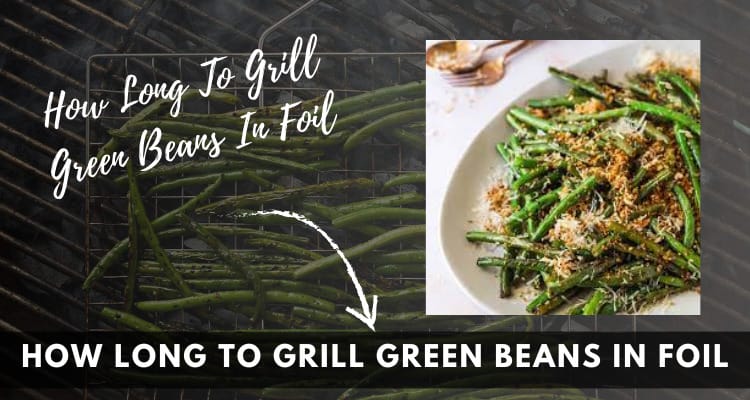Learn How to Quickly and Effectively Clean Your Gas Grill’s Regulator – No More Hassle, Just Results!
To clean the regulator on a gas grill, follow these steps: disconnect the tank from the grill, remove the regulator from the tank, soak it in warm soapy water for 15 minutes, scrub with a brush, rinse, and dry thoroughly. This will ensure your gas grill functions properly and safely.
In my experience, cleaning the regulator on a gas grill is an important task that should be done regularly. It ensures that your grill functions properly and extends its lifespan.
Regular maintenance of the regulator will prevent any potential malfunctions or accidents while using the grill. So, make sure to clean it at least once every few months to keep your grill running smoothly.
In this article, we will guide you on how to clean the regulator on your gas grill quickly and effectively.
So Let’s Get started!
Tools Required for Cleaning the Gas Grill Regulator
Before starting the cleaning process, make sure you have these tools on hand:
- Wrench (to disconnect the tank from the grill)
- Warm soapy water
- Brush (soft-bristled or toothbrush)
- Clean cloth or towel for drying
Step-by-Step Guide to Cleaning the Grill Regulator
There are a few simple steps to follow for cleaning the regulator on your gas grill:
1: Disconnect the Tank from the Grill
Before you begin cleaning the regulator, make sure to disconnect the tank from the grill. This will ensure your safety and prevent any gas leaks or accidents.
Using a wrench, loosen the connection between the tank and the grill’s regulator. Once loosened, lift off the tank and place it in a safe area away from any flames or heat sources.
2: Remove the Regulator from the Tank
Next, you need to remove the regulator from the tank. Simply unscrew it in a counterclockwise direction until it comes off. Make sure to handle it carefully and avoid any bending or damage.
3: Soak in Warm Soapy Water
Fill a bucket or sink with warm water and add some dish soap. Soak the regulator in the water for approximately 15 minutes to loosen any built-up grime or debris.
This will also help to sanitize and disinfect the regulator, ensuring a clean and safe grill.
4: Scrub with a Brush
After soaking, use a brush (soft-bristled or toothbrush) to gently scrub off any remaining debris or residue on the regulator. Be sure to clean all sides of the regulator thoroughly.
5: Rinse and Dry Thoroughly
Once you’re satisfied with the cleanliness of the regulator, rinse it off with clean water. Make sure there is no soap residue left behind.
Then use a clean cloth or towel to dry off the regulator completely. Make sure it is completely dry before reattaching it to the tank and grill.
Tips for Safe and Effective Gas Grill Regulator Maintenance
The following tips will help you maintain a clean and functional regulator on your gas grill:
Tip 1: Clean the Regulator Regularly
As mentioned earlier, cleaning the regulator every few months is recommended for optimum performance and safety. It’s also a good idea to inspect it for any damage or wear during cleaning.
Tip 2: Replace if Necessary
If you notice any significant damage or malfunction in your gas grill regulator, it may be time to replace it. A damaged regulator can pose a safety hazard and should be addressed immediately.
Tip 3: Store the Grill Properly
When not in use, make sure to store your gas grill in a dry and covered area to prevent any debris or moisture from affecting the regulator.
Tip 4: Check for Gas Leaks
Before using your gas grill each time, make sure to perform a simple leak test on the regulator. This involves using soapy water and checking for any bubbles or hissing sounds.
If you detect a gas leak, do not use the grill and address the issue immediately.
Tip 5: Read the Manufacturer’s Instructions
It’s always important to read and follow the manufacturer’s instructions for cleaning and maintaining your gas grill. They may have specific recommendations for your particular model.
Common Issues with Gas Grill Regulators and How to Address Them
Here are some common issues with gas grill regulators and how you can address them:
Issue 1: Low Flame or No Gas Flow
If you notice that your gas grill is producing a low flame or no flame at all, the issue may be with the regulator. Start by checking for any obstructions in the hose or fittings.
If there are no visible obstructions, try cleaning the regulator as described in this article. If the issue persists, it may be time to replace the regulator altogether.
Issue 2: Leaks or Gas Smell
As mentioned earlier, checking for gas leaks is an important part of maintaining your gas grill’s regulator. If you detect a gas smell or see bubbles when performing a leak test, make sure to address the issue before using the grill.
Issue 3: Damaged or Worn Regulator
Over time, a gas grill regulator may become damaged or worn due to use and exposure to elements. If you notice any significant damage or wear on your regulator, it’s best to replace it for safety reasons.
Issue 4: Difficulty Adjusting Flame
If you’re having trouble adjusting the flame on your gas grill, the regulator may be clogged. In this case, cleaning and unclogging the regulator as described in this article should do the trick.
Preventive Measures to Extend the Lifespan of a Gas Grill Regulator
In addition to regular cleaning and maintenance, here are some preventive measures you can take to extend the lifespan of your gas grill regulator:
1: Use a Grill Cover
Investing in a grill cover is a good idea to protect your gas grill from the elements and prevent any debris or moisture from damaging the regulator.
2: Keep the Grill Clean
Regularly cleaning the exterior of your gas grill can also help prevent debris and moisture from affecting the regulator. Use warm soapy water and a brush to clean off any built-up grime or residue on the grill’s surface.
3: Store Properly
As mentioned earlier, proper storage of your gas grill can help prevent damage to the regulator. Make sure to store it in a dry and covered area when not in use.
4: Schedule Professional Maintenance
If you’re not comfortable or familiar with maintaining your gas grill yourself, consider scheduling professional maintenance for your grill and regulator.
A trained technician can ensure that everything is in proper working order and catch any potential issues before they become bigger problems.
When and How Often Should You Clean the Gas Grill Regulator?
As a general rule of thumb, it’s recommended to clean your gas grill regulator every few months. However, the frequency may vary depending on usage and environmental factors.
If you use your grill frequently or live in an area with high humidity or other harsh weather conditions, you may want to clean the regulator more often.
It’s also important to regularly inspect the regulator for any damage or wear and address any issues as soon as possible. This will help ensure the safety and functionality of your gas grill.
Safety Precautions When Cleaning the Gas Grill Regulator
When performing any maintenance or cleaning on your gas grill regulator, it’s important to take safety precautions to prevent accidents or injury.
Wear Protective Gear
Make sure to wear protective gear such as gloves and safety glasses when handling cleaning products or using tools.
Turn off Gas Supply
Before cleaning the regulator, make sure to turn off the gas supply and disconnect the tank. This will prevent any gas from leaking out while you work.
Properly Ventilate the Area
When using any cleaning products, it’s important to properly ventilate the area to avoid inhaling fumes or chemicals. If possible, clean your gas grill outdoors or in a well-ventilated area.
Professional Maintenance vs. DIY Cleaning: Which is Better for Grill Regulators?
Both professional maintenance and DIY cleaning can be effective in maintaining your gas grill regulator. The best option for you will depend on your comfort level, experience, and budget.
If you’re comfortable with cleaning and maintaining your grill, then DIY cleaning may be a more cost-effective option.
However, if you’re not familiar with the process or prefer to have a trained professional handle it, scheduling regular maintenance may be the better choice.
Whichever option you choose, remember that regular cleaning and maintenance is crucial for keeping your gas grill regulator in good working condition. So make sure to prioritize this task to ensure safe and enjoyable grilling experiences.
So, take care of your gas grill regulator and enjoy cooking delicious meals for years to come!
Remember, safety first – so always address any concerns or issues with your regulator immediately and follow proper care guidelines.
Conclusion
To sum it up, gas grill regulators play a crucial role in the safe and efficient functioning of your gas grill. Regular cleaning and maintenance are key to addressing common issues with regulators and extending their lifespan.
By following proper preventive measures and safety precautions when cleaning, you can ensure the longevity of your regulator and enjoy delicious grilled meals for years to come.
Whether you choose to handle maintenance yourself or schedule professional maintenance, make sure to prioritize the care of your gas grill regulator for a worry-free grilling experience. So go ahead and fire up that grill!
Note: Please remember to always refer to your specific grill’s manual for instructions and guidelines related to cleaning and maintaining the regulator. So don’t forget to regularly check and refer to your grill’s manual for any specific instructions.


